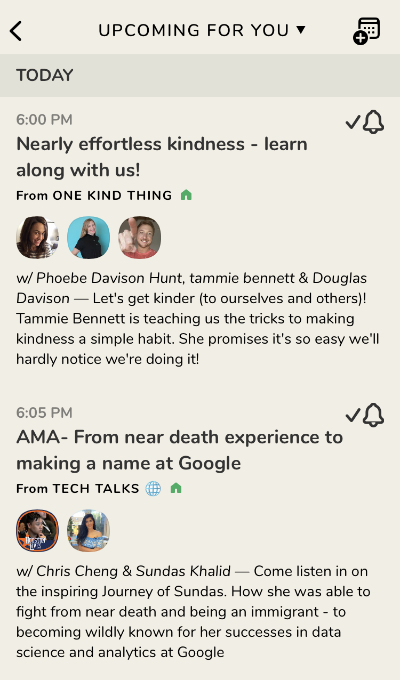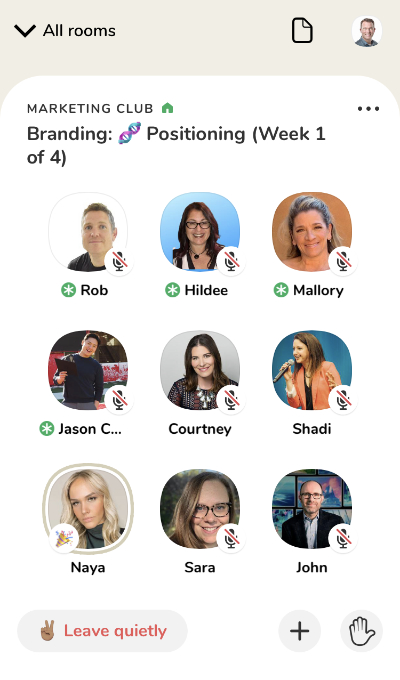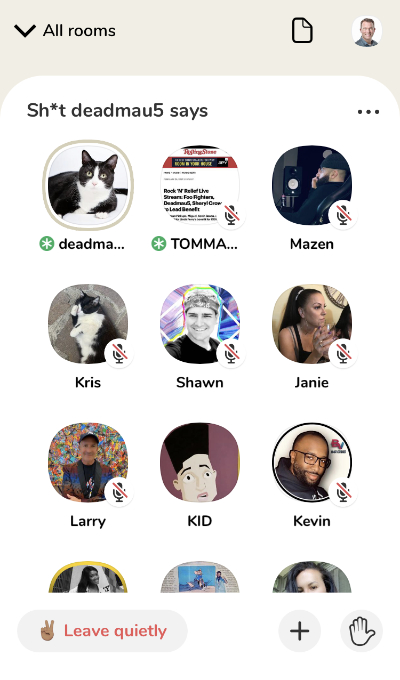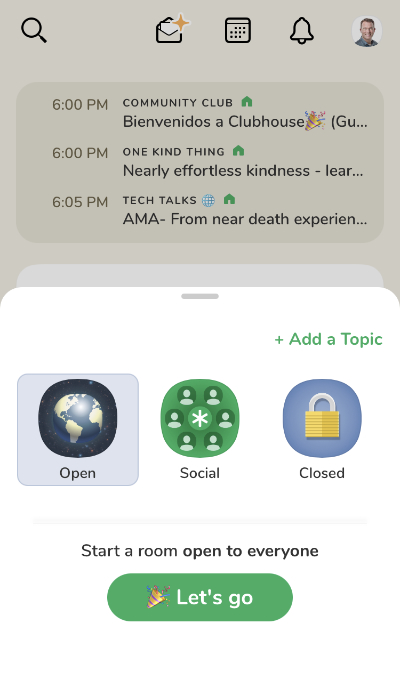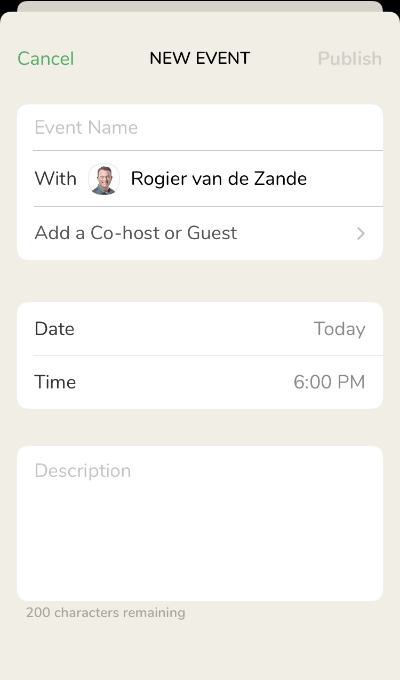In case you didn’t notice, there is a new kid in town: social media app Clubhouse. And it is taking the world by storm. In one month its user base went up from 2 to 10 million. So, what is Clubhouse? Why is it blowing up? And how do you get the most out of it?
Remember the time when you could pick up another phone in the house to eavesdrop on your sister’s call? That’s Clubhouse in a nutshell, kind of.
To be more precise, Clubhouse is a live and interactive podcast app. Listen in on other people’s conversations and raise your hand if you wish to contribute.

Clubhouse started in March 2020. But only recently, the drop-in audio chat app has been turning heads. Mostly thanks to Elon Musk, who appeared in one of the chat rooms, of which a recording went viral. (In general, it is not allowed to record Clubhouse sessions.) The resulting influx of new users forced the Clubhouse team to quickly acquire more funds and expand the infrastructure.
My experience so far
I have been using Clubhouse for a week now. I found it easy to hop in and out of the various group conversations. Yet, it took me a while to discover all of the app’s hidden features and how I am supposed to engage within the community. It can be overwhelming at first.
So, let me save you the trouble. Here’s what I have learned so far:
1. Room versus Club
On Clubhouse you enter Rooms and Clubs. What is the difference?
Rooms are the actual audio conversations you join. They start at a certain time and eventually end.
Clubs are persistent groups of people with a shared interest. Like the Marketing Club. When you follow a Club, you will automatically be notified of all the Rooms hosted by the Club.
Often, Clubs will schedule recurring Rooms on set days. For example, the weekly Clubhouse Townhall on Sundays, where founders Paul and Rohan talk about the app’s development and answer questions.
2. Audience versus on stage
Basically, Rooms consist of two groups: the listeners in the audience and the people talking on stage.
When you join a Room, you first take place in the audience – the bottom part of your screen. As a member of the audience, you won’t be able to speak. In most Rooms, you can raise your hand to indicate that you want to chime in or ask a question.
At the top of your screen, you see the people currently on stage. They are allowed to unmute and speak. One or more moderators – recognizable by the green asterisk – host the room and lead the conversation. Moderators can bring people on stage and move them back to the audience.
3. Mute is good
Video conferencing during COVID-19 is like: “Can’t hear you, unmute yourself!” On Clubhouse it’s the opposite: “Oh gawd, could you please mute?”
People in the audience are muted by default. When someone is brought on stage to join the conversation, the person will automatically be unmuted. If that’s you, remember to mute yourself until it is your turn to speak. If you are the moderator, you can also mute the person just brought on stage.
When you are done speaking, don’t forget to mute again. Sometimes, experienced Clubhouse members even say “I am done speaking” to signal that someone else can start talking.
4. Discover ‘hidden’ Rooms
Most Rooms on Clubhouse are not affiliated with a Club. You will only get notified of a Club-less Room when you follow its host.
Many business leaders and celebrities roam through Rooms not linked to a Club. So, if you want to be in on the action, be sure to follow some of them.
To name a couple: I enjoy the spontaneous Rooms that actor Tom Green and artist deadmau5 are hosting lately.
5. PTR = Pull To Refresh
The most exciting thing about a new social media platform is that no one really knows what to expect or where it is heading. Being on Clubhouse, you can sense that millions of people are organically discovering and defining new customs and vocabulary together.
PTR is a great example of community vocabulary, unique to Clubhouse. PTR stands for Pull To Refresh, meaning: pull down the screen during a Room conversation to refresh all the profile pictures.
You see, at this point, Clubhouse doesn’t have a dedicated picture-sharing feature (yet). Instead, people share photos by updating their profile picture, and then ask the Room to PTR so everyone can see.
Pro PTR tip: while in a Room, tap and hold your profile picture in the top right corner to quickly access your gallery and select a photo.
6. Start your own Room
A couple of tips if you are planning to host your own Room:
- Try bringing in at least a second moderator. This will give you multiple advantages. You will reach a larger audience to get your Room going. You can start a conversation amongst yourselves while an audience begins to form. And you won’t immediately lose your entire Room when one of you has technical difficulties.
- If you aim to grow an audience by organizing recurring Rooms, make sure that you are consistent. Provide a predictable schedule and stick to a fixed topic.
- You will have the best experience on Clubhouse when you welcome your audience to join the conversation. Therefore, schedule a Room with a title that invokes participation (“What do you think of…”), not one that creates a wait-and-see audience (“How to become better at…”).
- Invite people to the Room by tapping the + button. You can only select people that already follow you. Use the search bar to find someone in particular. Pro tip: search queries also scan people’s bio. So, instead of typing a name, try ‘bitcoin’ or the plane emoji to retrieve a list of investors or travelers (that follow you).
iPhone-only, invite-only
As mentioned before, due to its success, Clubhouse is experiencing serious growing pains. For this reason, Clubhouse is only available for iPhone, for now.
Another hurdle is that joining Clubhouse requires a personal invitation. As a result, invites are being sold online for 10 to 30 bucks. Please, don’t fall for that.
I am handing out Clubhouse invites for free, while they last. Want one? Then leave a comment below and tell me: what are you hoping to get out of the app?

